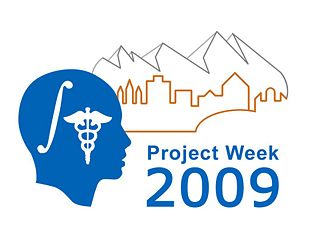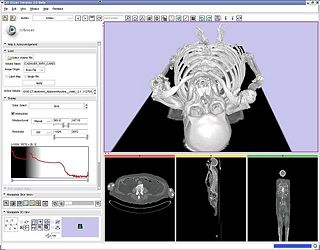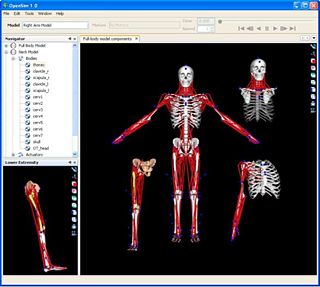Difference between revisions of "Stanford SIMBIOS: Whole Body Segmentation for Simulation"
| Line 25: | Line 25: | ||
<div style="width: 27%; float: left;"> | <div style="width: 27%; float: left;"> | ||
<h1>Progress</h1> | <h1>Progress</h1> | ||
| + | * Compiled a set of 5 knee MRI data-sets with manually segmented volumes. | ||
| + | * Evaluated registration algorithms to develop an averaged atlas of the knee joint. | ||
| + | * Evaluated EMSegmenter to create atlas-independent model creation of the femur bone. | ||
</div> | </div> | ||
Revision as of 20:47, 8 January 2009
Home < Stanford SIMBIOS: Whole Body Segmentation for Simulation Return to Project Week Main Page |
Key Investigators
- Stanford: Harish Doddi, Saikat Pal
- WashU: Daniel Marcus
- Harvard: Ron Kikinis
- Steve Pieper, Isomics, Inc.
Project
Objective
The aim of this project is to develop an automatic/semi-automatic methodology to convert whole body imaging datasets into three-dimensional models for neuromuscular biomechanics and finite element simulations. Initially, we will investigate the existing capabilities in EMSegmenter software to automatically segment the knee joint.
Approach, Plan
Investigate the existing functionality of EMSegementer to extract whole body models from CT and MR datasets. Initial efforts will be focused on developing atlases of specific joints (e.g. the knee) and evaluating EMSegmenter algorithms. The plan is to have imported MRI knee geometries in EMSegmenter and create an average atlas before the project week. During the project week, the EMSegmenter algorithm will be tested on a specific subject geometries.
Progress
- Compiled a set of 5 knee MRI data-sets with manually segmented volumes.
- Evaluated registration algorithms to develop an averaged atlas of the knee joint.
- Evaluated EMSegmenter to create atlas-independent model creation of the femur bone.

